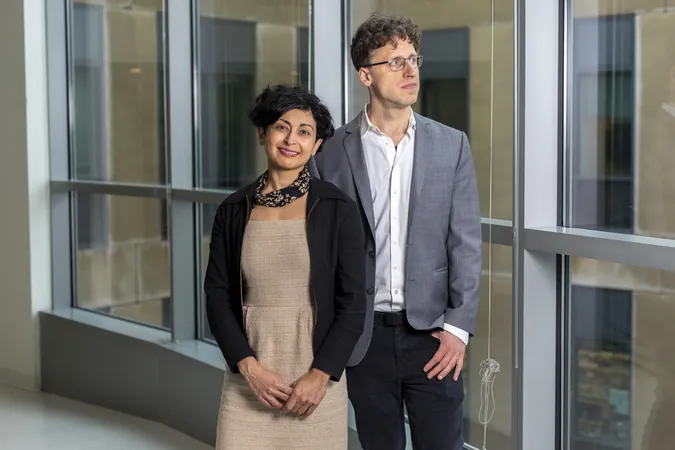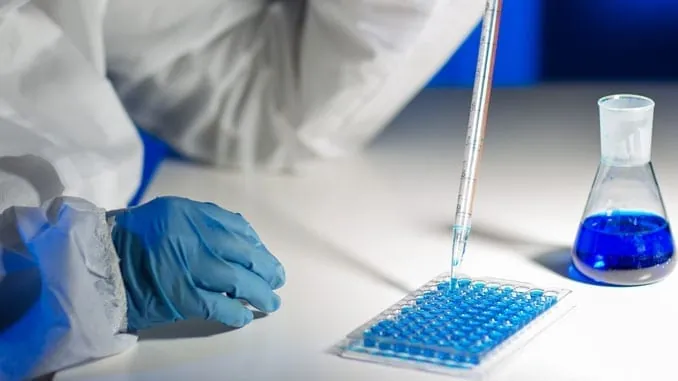
Breakthrough in Prion Disease Research Promises Hope for Treatment
2025-04-07
Author: Sarah
Breakthrough in Prion Disease Research Promises Hope for Treatment
New groundbreaking research has provided a glimmer of hope for those affected by prion diseases—a group of rare and invariably fatal disorders caused by misfolded proteins in the brain. A team of scientists from the Broad Institute of MIT and Harvard University has made significant strides toward what could be the first treatment for these devastating conditions.
Published in the prestigious journal *Nature Medicine*, the study revealed that altering a single base in the gene responsible for producing these harmful proteins halved their levels in the brains of laboratory mice. Astonishingly, this reduction led to an impressive 52 percent increase in the lifespans of the animals. While the scientists acknowledge that there are many hurdles to clear before this research can transition to human clinical trials, they remain optimistic about the path forward, which they began exploring nine years ago.
David Liu, the senior author of the paper, proclaimed the findings a "milestone," but urged caution. "One has to be careful to recognize that the path to an actual clinical trial has many such milestones that have to be traversed,” Liu said.
A Personal Mission: Combatting Prion Diseases
Notably, this research is deeply personal for several team members. Dr. Sonia Vallabh, a lead author and assistant professor of neurology, has tested positive for fatal familial insomnia, a hereditary form of prion disease. The death of Vallabh's mother from this mysterious condition catalyzed a profound personal commitment to the fight against prion diseases. After retraining in science, she and her husband, Eric Minikel, have established their own lab at the Broad Institute, rallying a dedicated team of researchers behind their cause.
"It's an incredible privilege to work with them," Liu remarked, recognizing the extraordinary motivation Vallabh and Minikel bring to their work. Their personal stakes elevate the urgency and dedication surrounding this research, spurring their colleagues to push forward with vigor and precision.
The promising results of the recent experiments build on Liu’s pioneering base editing technology, which has already found application in 13 clinical trials addressing conditions like hypercholesterolemia and sickle cell disease. As Vallabh and Minikel navigate the complex landscape of prion research, they emphasize the collaborative spirit that binds their efforts to those of Liu's lab.
A Cautious Path Forward
Using a mouse model of human prion disease, scientists have increased the chances of successful translation of their findings to human applications. This research, supported by esteemed organizations like the National Institutes of Health and the Howard Hughes Medical Institute, utilized an innovative genetic editor delivered through an adeno-associated virus—essentially, a virus engineered to specifically target cells and modify their DNA to reduce protein production.
Researcher Meirui An noted that improvements to the vector used in the study helped enhance safety and effectiveness, resulting in a 63 percent decrease in prion protein production with a lower dosage. However, the inherently dangerous and infectious nature of prion proteins means that further studies will be conducted cautiously, as past incidents have illustrated the risks involved.
While human trials remain several years away, Liu emphasizes the ongoing necessity of refining the base editing approach, enhancing targeting mechanisms, and minimizing unintentional effects on other tissue types.
Amidst the challenges, the collaborative effort between labs, particularly with experts like Benjamin Deverman on vector engineering, highlights the inspiring drive behind this research, with team members finding personal motivation in the promise of potentially life-saving treatments for prion diseases.
Stay tuned for more updates on this groundbreaking journey as scientists strive to turn these hopeful findings into reality for those affected by prion disorders. Could this be the dawn of a new era in prion disease treatment? Only time will tell!



 Brasil (PT)
Brasil (PT)
 Canada (EN)
Canada (EN)
 Chile (ES)
Chile (ES)
 Česko (CS)
Česko (CS)
 대한민국 (KO)
대한민국 (KO)
 España (ES)
España (ES)
 France (FR)
France (FR)
 Hong Kong (EN)
Hong Kong (EN)
 Italia (IT)
Italia (IT)
 日本 (JA)
日本 (JA)
 Magyarország (HU)
Magyarország (HU)
 Norge (NO)
Norge (NO)
 Polska (PL)
Polska (PL)
 Schweiz (DE)
Schweiz (DE)
 Singapore (EN)
Singapore (EN)
 Sverige (SV)
Sverige (SV)
 Suomi (FI)
Suomi (FI)
 Türkiye (TR)
Türkiye (TR)
 الإمارات العربية المتحدة (AR)
الإمارات العربية المتحدة (AR)